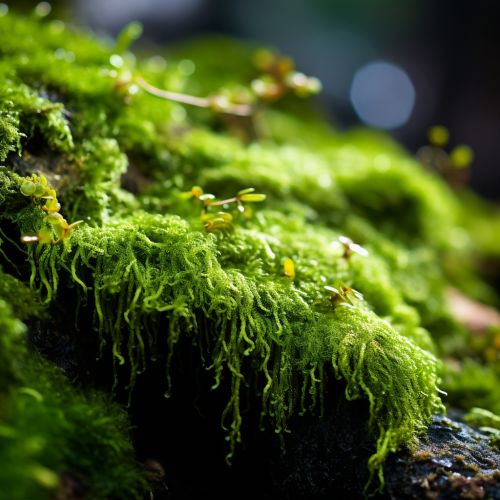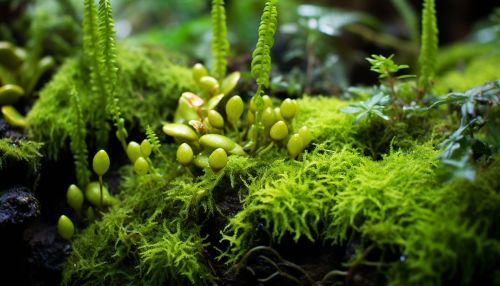Bryophyte Reproduction
Introduction
Bryophytes are a group of plants that include mosses, liverworts, and hornworts. They are characterized by their ability to thrive in a variety of environments, from the arctic tundra to the tropical rainforest. This article will delve into the fascinating world of bryophyte reproduction, a process that is both complex and unique among the plant kingdom.


Bryophyte Classification and Structure
Bryophytes are classified into three divisions: Mosses (Bryophyta), Liverworts (Marchantiophyta), and Hornworts (Anthocerotophyta). These divisions are primarily based on their reproductive structures and methods. Despite their differences, all bryophytes share a common structure that is crucial to their reproductive process.
Reproductive Structures
Bryophytes possess two distinct reproductive structures: the gametophyte and the sporophyte. The gametophyte is the dominant phase in the bryophyte life cycle and is the phase that we typically associate with the visible plant. The sporophyte, on the other hand, is a smaller structure that is often attached to the gametophyte.
Gametophyte
The gametophyte is the sexual phase of the bryophyte life cycle. It produces gametes, or sex cells, in specialized structures called archegonia (female) and antheridia (male). The archegonia produce eggs, while the antheridia produce sperm.
Sporophyte
The sporophyte is the asexual phase of the bryophyte life cycle. It is typically attached to the gametophyte and is dependent on it for nutrients. The sporophyte produces spores in a structure called a sporangium. These spores are released and can grow into new gametophytes, thus continuing the life cycle.
Reproductive Process
The reproductive process in bryophytes involves both sexual and asexual phases. This cycle, known as alternation of generations, is a defining characteristic of all plants.
Sexual Reproduction
Sexual reproduction in bryophytes begins with the production of gametes in the gametophyte. When conditions are right, the sperm from the antheridia will swim through a film of water to reach the eggs in the archegonia. Fertilization then occurs, resulting in a zygote.
Asexual Reproduction
The zygote grows into a sporophyte, marking the beginning of the asexual phase. The sporophyte produces spores in its sporangium. When the sporangium matures, it releases the spores, which can then grow into new gametophytes.
Environmental Influences
The environment plays a crucial role in bryophyte reproduction. Bryophytes require a film of water for the sperm to reach the eggs, making them highly dependent on their environment for successful reproduction. Additionally, the dispersal of spores is often influenced by environmental factors such as wind and water.
Conclusion
Bryophyte reproduction is a complex process that involves both sexual and asexual phases. Despite their small size and simple structure, bryophytes have a sophisticated reproductive system that allows them to thrive in a wide range of environments. Their unique reproductive process provides a fascinating glimpse into the diversity and adaptability of the plant kingdom.
